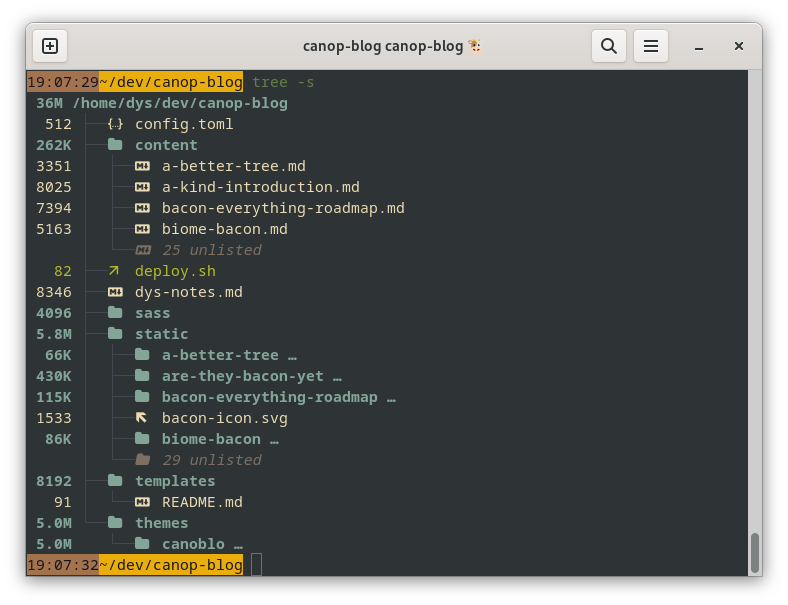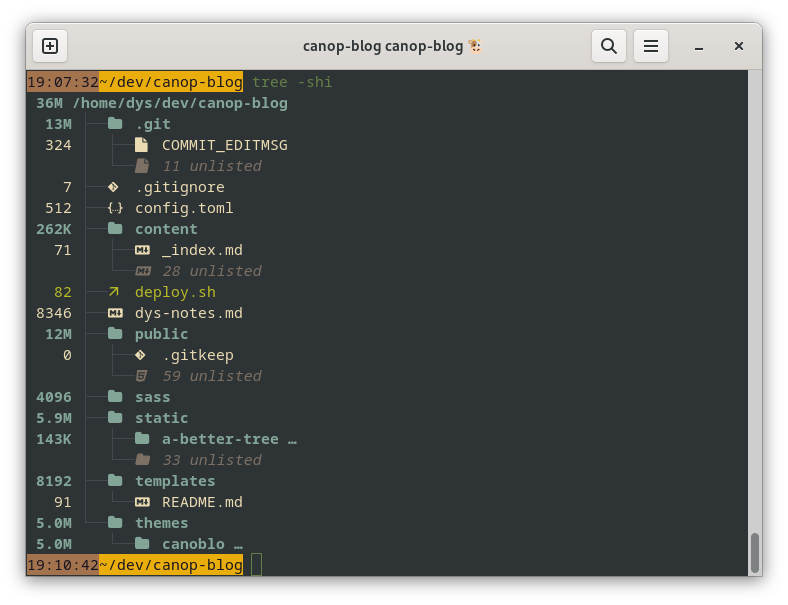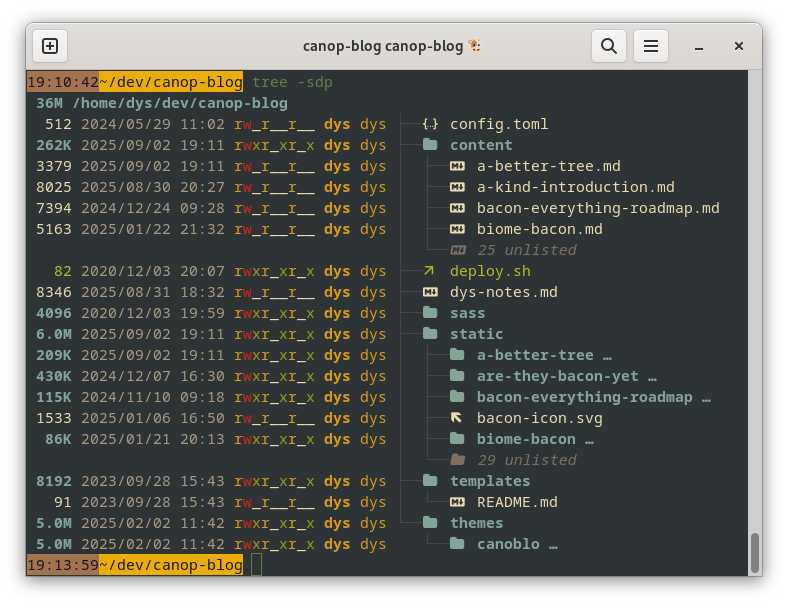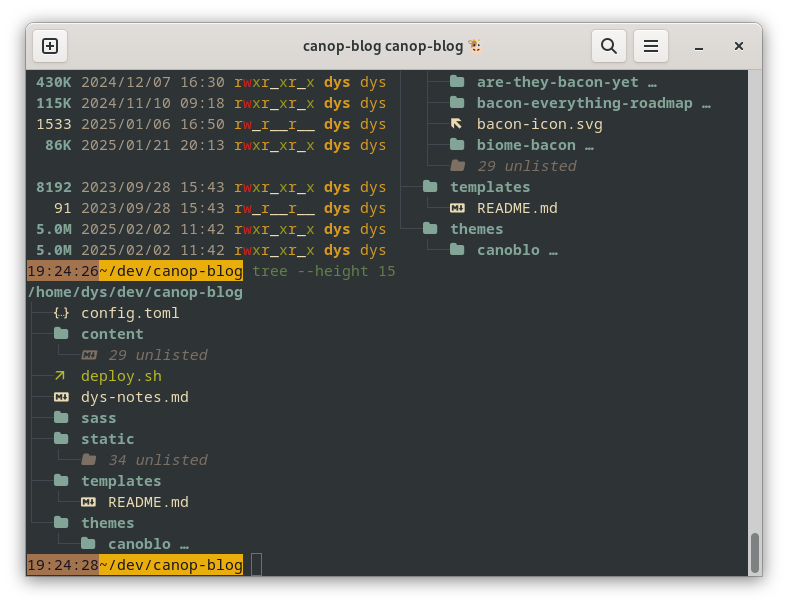Table of Contents
You certainly know the old tree command.
Or maybe you don't, because it's not installed by default anymore on new distributions.
Why ? It never kept the promise of an overview of the current directory.
Try it on any directory whose content you want to see: you'll see only the tail of a long list and you'll learn nothing.
But there's a better solution, a command you can install to get a better tree.
As you'll have it aliased to tree, that's how I'll call it from now, the better tree.
Usage Overview
Just the tree
Assuming we have a small terminal, in any directory, launch our better tree:

The overview fits the terminal, you don't have to scroll.
All first-level directories are shown, because their count is smaller than the count of available lines.
Some of those directories have "unlisted": not everything in them can be displayed.
And the second-level directories are all followed by an ellipsis to show that their content isn't displayed.
If there was less, or more, content, it could have been different but
- the display always fits the screen
- you get a reasonnable overview of the content of the current directory
Technically, this representation is based on a "Breadth-First Search" exploration of the directory.
Show sizes
Our better tree function can show sizes, including directory size (recursively computed):
Run tree -s

Show hidden and ignored files
If you pay close attention, you may notice that sizes in the last screenshot don't add up: the total directory size is 36M and is clearly bigger than the sum of files inside.
The reason is that tree, by default, don't show hidden and ignored files.
-h will show hidden files, and -i will show files ignored because of a .ignore or .gitignore file.
Let's check with -shi:

Show more information
Other available information include the permissions (on unix) and the date (of the most recently file for directories).
So you may run eg tree -sdp

Set the height
Maybe you just want a very small overview that will stay readable when you type other commands ?
Or maybe you want a tree tailored to a given height so that you can paste it in a document ?
Whatever the reason, you may specify the height with eg tree --height 15:

Note: What you really specify is the "available height", which includes the previous and following prompts. If you want a specific number of lines, add 2 to that number.
Install
This better tree function is based on the broot command. Install it.
Once it's installed, tree can be defined as a shell function.
For example in your .bashrc or .zshrc:
function tree {
br -c :pt "$@"
}
Interactive Exploration
As you saw, the tree function is just calling broot with the instruction to print the tree (:pt).
This tree function is useful as a replacement of the standard tree command, but when you want to explore or modify the directory, search, preview, etc. then you should use broot which leverages the same idea of a BFS overview in a full file manager.